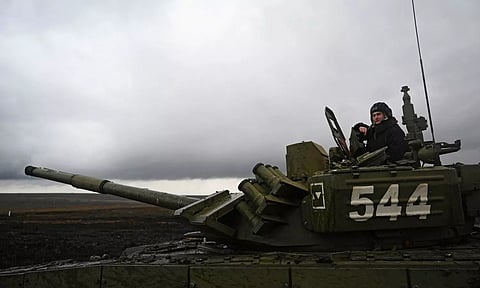

CHENNAI: On the second anniversary of the Russian invasion of Ukraine, Kyiv and its Western allies are faced with a slew of tough questions. The UN’s humanitarian appeal to meet Ukraine’s need is only 10% funded for 2024, jeopardising assistance for those in need across frontline areas. An estimated 8.5 mn Ukrainians living in dire conditions near combat zones risk going without basic humanitarian deliveries, including food and water. The UN’s annual appeal for Ukraine is to the tune of $3.1 bn.
The big concern is how long can Ukraine’s allies sustain — not just humanitarian aid, but financial and military funding? Last year, Ukraine received $42.5 bn from foreign partners, of which $11.6 bn was in non-repayable grant aid, as per the country’s Ministry of Finance. The grant assistance was provided by the US, Japan, Norway, Germany, Spain, Finland, Switzerland, Ireland, Belgium, and Iceland. The US provided the biggest amount of non-repayable grant aid, to the tune of $11 bn. Long-term concessional financing to Ukraine amounted to $30.9 bn, which included loans from the European Union ($19.5 bn), the International Monetary Fund ($4.5 bn), Japan ($3.4 bn), Canada ($1.8 bn), the UK ($1 bn), the World Bank ($660 million) and Spain ($50 million).
The Kiel Institute says the US has spent upwards of $66 bn on Ukraine. The UK, arguably the big security player in the region, has also pledged over $15 bn to Ukraine since 2022. The funding helps Ukraine meet obligations towards its citizens. It has been utilising the funds to defend itself against Moscow, keeping hospitals and schools, as well as public infrastructure running, as well as paying salaries to government servants, providing subsidies to those impacted by the war, and doling out pensions. Unfortunately, this year, due to various geopolitical developments and differences of opinion among allies, the funding has stalled.
Republican lawmakers are sceptical to earmark taxpayer money towards Kyiv — like the $60 bn in the pipeline, proposed by the Biden administration. Funding the war has now turned into a political bargaining chip for border control issues in Washington. EU leaders recently agreed to a $54 bn package for Ukraine between now and 2027. However, PM Viktor Orban of Hungary, a close ally of Russia vetoed the Euro proposal.
The freeze in funding spells bad news for Ukraine. Dwindling ammunition threatens Kyiv’s hold on the 1,000-km front line under Russian assault. Ukrainian forces withdrew from the city of Avdiivka in the Donetsk region last week after daily onslaughts for the last four months. Its seizure boosted Moscow’s morale as it now controls roughly one-quarter of Ukraine. It also confirmed that the Kremlin’s troops are setting the pace in the fight. What was Russia’s biggest victory since the battle of Bakhmut last year, could allow the Kremlin’s troops to push their offensive further west, deeper into Ukrainian-held territory over less-fortified areas.
Ukraine is considering legislation to increase the potential pool of recruits by about 400,000, by lowering the enlistment age from 27 to 25. The proposal is unpopular, forcing elected officials to grapple with questions that cut to the heart of nationhood: Can they convince enough citizens to sacrifice their lives for what seems like an endless conflict? And, if not, are they willing to accept the alternative?